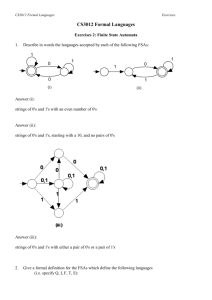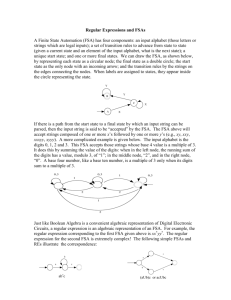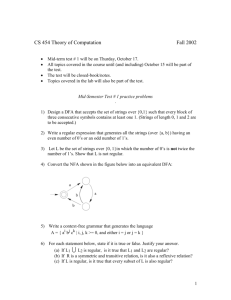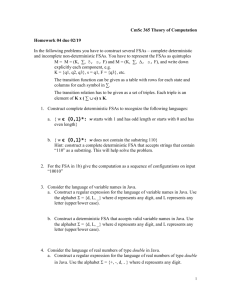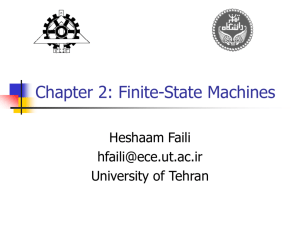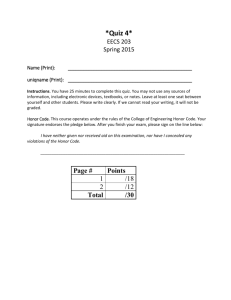CS3012: Formal Languages and Compilers
advertisement
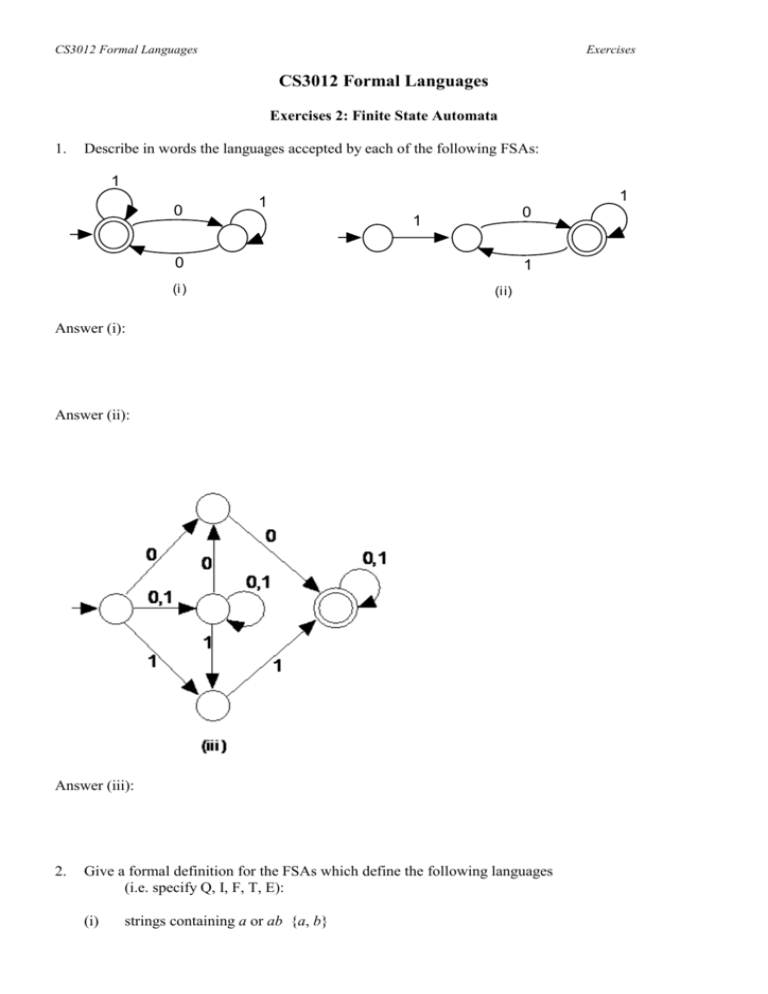
CS3012 Formal Languages
Exercises
CS3012 Formal Languages
Exercises 2: Finite State Automata
1.
Describe in words the languages accepted by each of the following FSAs:
1
0
1
1
0
1
0
(i )
1
(i i)
Answer (i):
Answer (ii):
Answer (iii):
2.
Give a formal definition for the FSAs which define the following languages
(i.e. specify Q, I, F, T, E):
(i)
strings containing a or ab {a, b}
CS3012 Formal Languages
Exercises
Answer:
(ii)
strings containing aba or bab {a, b}
Answer:
(iii)
strings containing exactly one a (and any number of bs) or exactly one b (and any number of
as) {a, b}
Answer:
(iv)
strings containing a, ab or abc {a, b, c}
Answer:
(v)
strings containing a, ba or cba {a, b, c}
Answer:
3.
Give a formal definition for a FSA accepting the infinite set of strings representing numbers divisible
by 2. (i.e. 0,2,4,6,8,10,12,….)
Answer:
4.
Give a formal definition for a FSA accepting the infinite set of strings representing numbers divisible
by 3. (this one is tricky, try (on paper) doing a division of 3 into some large number x, and see
if the process you are using to deal with each new digit of x could be automated by a machine.)
Answer:
CS3012 Formal Languages
5.
Exercises
Give a formal definition for a FSA accepting the set of strings over {a, b} which contain an even
number of a's and an even number of b's. (this one is tricky, try doing it manually for some random
string of a’s and b’s. What do you need to remember as you’re going through the string? How many
states will the FSA need, to remember this?)
Answer:
6.
Give a formal definition for a DFSA for the following, using the "NDFSA -> DFSA" algorithm from
lectures (i.e. in your answer show the workings of the table used for removing edge choices,
and specify the final Q, I, F, T, E):
Answer (i)
Answer (ii)
1
2
a
b
a
3
4
b
5
a
6
b
(i ii )
Answer (iii)
7.
(very simple) Give a method of constructing a FSA B from a FSA A, such that:
L(B) = {w | there is a path from p to q labelled w in A, for some states p and q}
CS3012 Formal Languages
Answer:
Exercises
